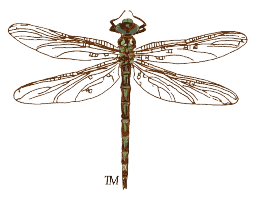The Monarch Butterfly Migration
Its Rise and Fall
Reviewed by Mimi Cavender
A new book by Monika Maeckle, from University of Oklahoma Press, 2024
Try to move your eyes past the exquisite cover art. Those are jewels—pearl and amber cloisonné aglow on jet black. No, a shadowed curtain of winged animals clustered in moonlight. They are both familiar and mysterious. The Monarch Butterfly Migration, yes—but here comes the subtitle: Its Rise and Fall.
Oh, again that urgency. We’re ecologists, environmentalists; we’re trained Master Naturalists, for heaven’s sake, and we love butterflies. We watch for them, count them, photograph them (See About the Cover in the Hays Humm November 2024 issue.). We nurture our milkweed for the monarchs’ spring migration north, and we treasure our native frostweed for their fall migration south. We care about native species’ diversity and healthy populations and habitat protection. We care.
So these beautifully researched and written books—these beautifully experienced documentaries—gnaw at us, eloquently task us to reweave yet another frayed thread back into nature’s rich robe.
The fall of the monarch migration? Really? When and why? When, then, did it rise? And where are the monarch migration numbers today—falling, or rising? (I’m not telling. You’ll read the book.) We fly this historic trajectory with San Antonio journalist and butterfly champion Monika Maeckle (MACK-lee). Her personal story enriches the narrative; her science, social, and political savvy inform every anecdote, every name named. She even interviewed agrochemical giant Monsanto.
The 1975 discovery of the monarchs’ overwintering site in the oyamel forests of central Mexico sparked scientific rivalries and academic factionalism. A shiny new Internet rushed international attention to this iconic insect. Tagging and tracking have been refined and developed into citizen science programs; butterfly behavior and DNA research programs thrive. Social media blogs vie for market and mind share. “The Monarchy,” for better or for worse, is upon us.
Such intense public interest in this migrating butterfly species has encouraged its inclusion in the growing number of wild species now raised in captivity. Yes, they’re supplied to research programs, but are also shipped live to schoolrooms, weddings, and funerals. Maeckle’s detailed and exquisitely balanced discussion of the cons--and pros?—of captive breeding and shipping of these wild animals is a tribute to her journalist’s background. You will be intrigued with how this deeply informed scientist brings us along through ethical cartwheels to land on her decision to order ninety-three live monarchs for release at her father’s celebration of life. The overarching argument weighs conservation against public relations. They are often interdependent.
A darkly interesting bit: our love of the monarchs is apparently rivaled by our love of guacamole, so much so that locals are cutting down the oyamel fir trees—the monarchs’ historic Mexican winter hibernation site—to plant avocados, which in turn are being violently “managed” by the cartels.
Remember before we knew stuff? Before we knew our Little Bluestem from KR, our red oak from white oaks, our Monarchs from Queens? We looked out across Texas, and grass was just grass, a tree was a tree, and a butterfly was a butterfly. That’s how I felt about butterflies before reading Maeckle’s work.
The world is changing. The climate is warming. In a brave new world, there will be heat, drought, agribusiness, bioengineering, pesticides, pollinating drones, and always vacillating political will. How will these affect the ancient phenomenon of monarch migration?
The universe seems always poised on a knife edge: fragile or robust, chaotic or self-regulating. So what does Monika Maeckle suspect is the future of the monarch migration? You’ll be surprised.
San Antonio native Monika Maeckle spoke at the Texas Master Naturalist Annual Meeting about key elements of her book and shared her personal history as a monarch advocate. Photo courtesy Betsy Cross


